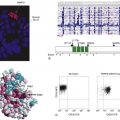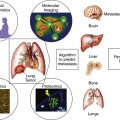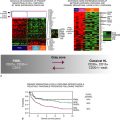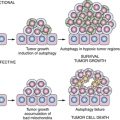Figure 57-1 Actions of cytokine/growth factors binding to their receptors on the cell surface Cytokines and growth factors are the messengers that mediate intercellular communication. The regulation of cellular and nuclear functions by cytokines and growth factors is initiated through the activation of cell surface receptors. All receptors have a ligand-binding domain that ensures ligand specificity and an effector domain that initiates the generation of the biologic response on ligand binding. The activated receptor may then interact with other cellular components to complete the signal transduction process. Briefly, cytokine binding to receptor subunits induces homo- or heterodimerization resulting in the activation of Jaks that are bound to the receptor chains. The Jaks in turn phosphorylate tyrosine-based docking sites on the receptor. STATs bind via their SH2 domains. The STATs are then phosphorylated, form homo- or heterodimers, and translocate to the nucleus, where they bind target sequences, thereby regulating gene expression.
Table 57-1
Receptors, Natural Antagonists, and Chromosomal Locations of Growth Factors and Cytokines
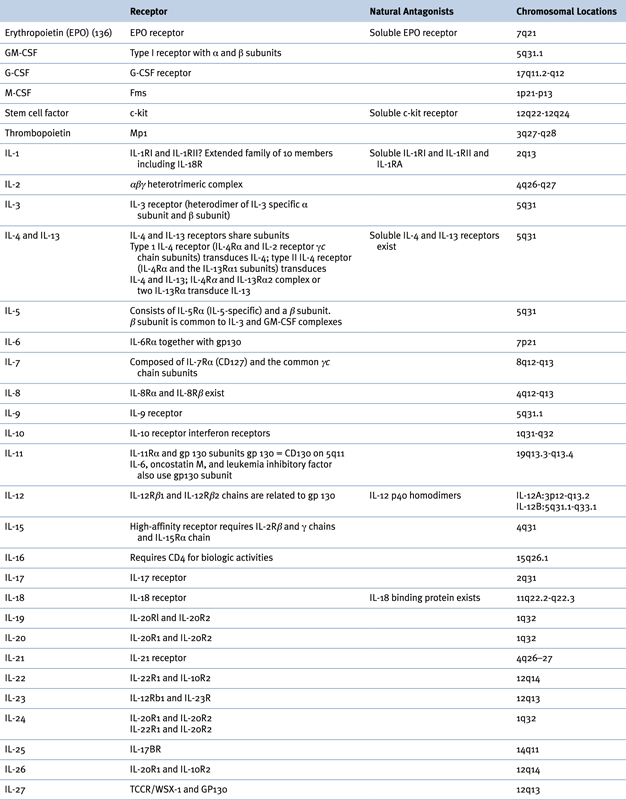

G-CSF, Granulocyte colony-stimulating factor; GM-CSF, granulocyte-macrophage colony-stimulating factor; IL, interleukin; M-CSF, macrophage colony-stimulating factor.
Stay updated, free articles. Join our Telegram channel

Full access? Get Clinical Tree



